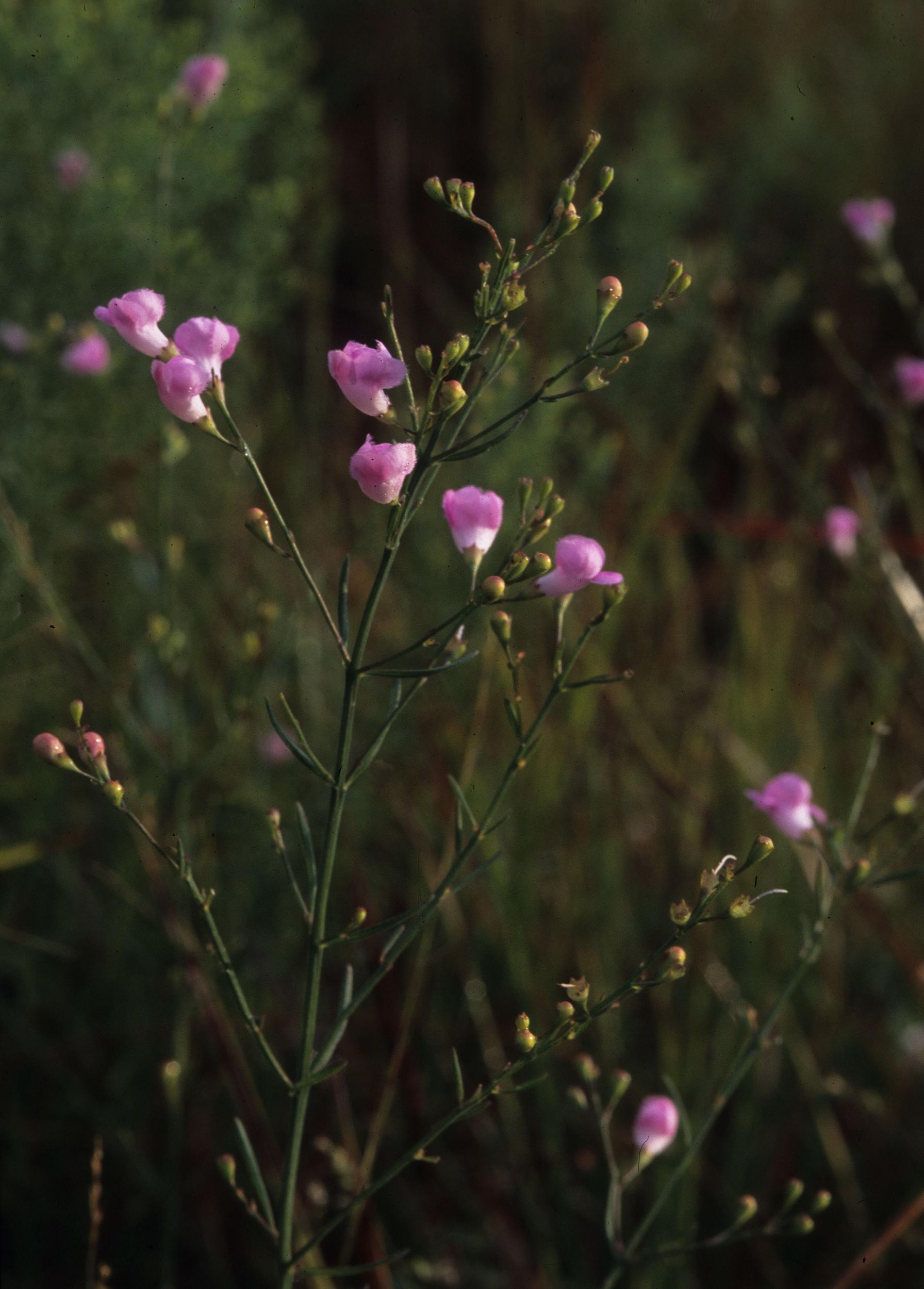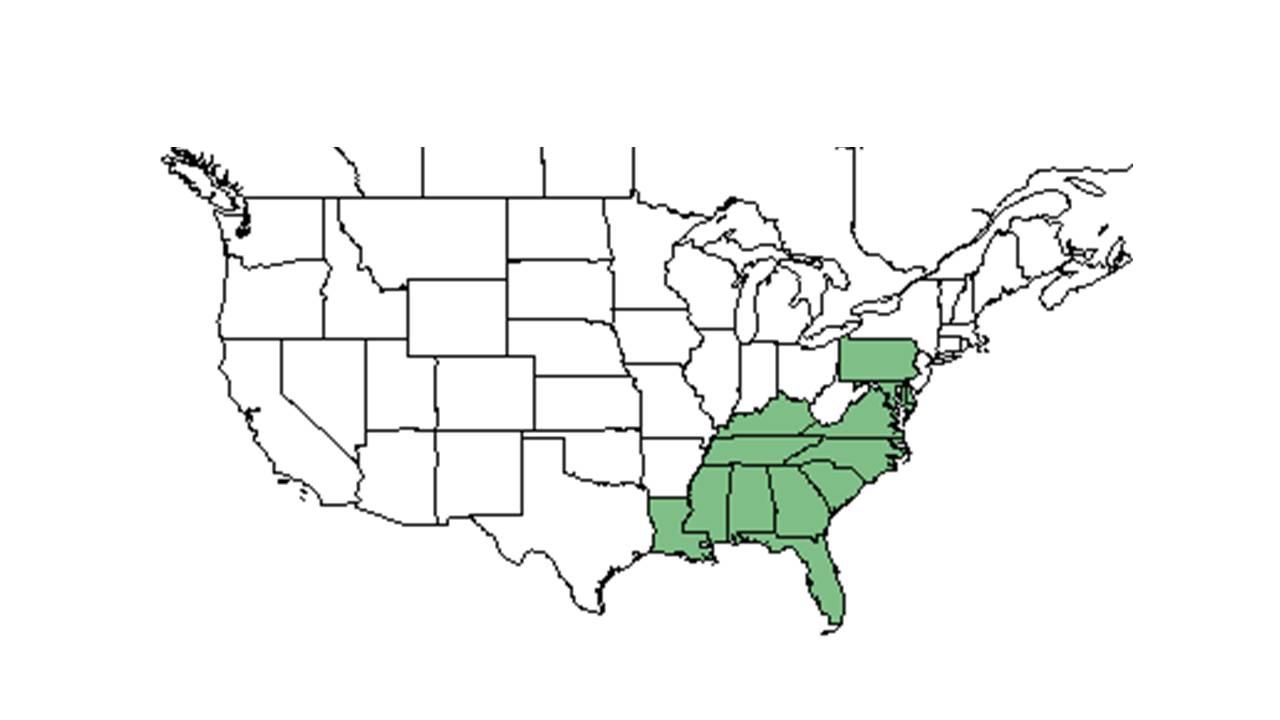Difference between revisions of "Agalinis obtusifolia"
(→Ecology) |
|||
| Line 8: | Line 8: | ||
| divisio = Magnoliophyta - Flowering plants | | divisio = Magnoliophyta - Flowering plants | ||
| classis = Magnoliopsida - Dicotyledons | | classis = Magnoliopsida - Dicotyledons | ||
| − | | ordo = | + | | ordo = Lamiales |
| − | | familia = | + | | familia = Orobanchaceae |
| genus = ''Agalinis'' | | genus = ''Agalinis'' | ||
| species = '''''A. obtusifolia''''' | | species = '''''A. obtusifolia''''' | ||
Revision as of 10:37, 30 June 2015
| Agalinis obtusifolia | |
|---|---|

| |
| Photo was taken by Gil Nelson | |
| Scientific classification | |
| Kingdom: | Plantae |
| Division: | Magnoliophyta - Flowering plants |
| Class: | Magnoliopsida - Dicotyledons |
| Order: | Lamiales |
| Family: | Orobanchaceae |
| Genus: | Agalinis |
| Species: | A. obtusifolia |
| Binomial name | |
| Agalinis obtusifolia Raf. | |

| |
| Natural range of Agalinis obtusifolia from USDA NRCS Plants Database. | |
Contents
Description
Common names: Tenlobe False Foxglove
Synonym names: A. erecta Pennell, misapplied; A. keyensis Pennell; A. parviflora (Benth.) Small; A. tenella Pennell; Gerardia obstusifolia (Raf.) Pennell; Gerardia parviflora (Benth.) Champ.; and Gerardia tenella Pennell
Is an annual and flowers summer to fall. (Hall 1993).
Distribution
Is infrequent in all of Florida. Found from: west to Mississippi and north to Pennsylvania (Hall 1993). It's found within the coastal plain, from Delaware to the Florida Keys, westward to southeastern Louisiana (Godfrey 1981).
Ecology
Habitat
It occurs in frequently burned upland pine communities (Ultisols), flatwoods (Spodosols), and wet meadows, savannas, and seepage slopes (pitcher plant bogs) including peaty areas (Histosols). It is also occurs on shallow calcareous soils of limestone glades of northern Florida and oolitic limerock of slash pine rocklands in sothern Florida (FSU Herbarium). It occurs in primarily high light areas maintained by fire or edaphic conditions but also partial shade adjacent to open areas (FSU Herbarium). It is tolerant of competition with dense grass and often occurs in conjuction in areas dominated by bunch grasses and sedges (FSU Herbarium). It seems to be limited to native pine and wet prairie communities with minimal soil disturbance, although it can occur on roadsides (FSU Herbarium).Is found in pine savannas, flatwoods, and bog margins (Wunderlin and Hansen 2003). Is also found in seasonally wet pine savannas and flatwoods, hillside bogs in pinelands, in shallow soil on oolitic limestone in pinelands (Godfrey 1981).
Phenology
Seed dispersal
Seed bank and germination
Fire ecology
Pollination
Use by animals
Diseases and parasites
Conservation and Management
Cultivation and restoration
Photo Gallery
References and notes
FSU herbarium herbarium.bio.fsu.edu
Wunderlin, Richard P. and Bruce F. Hansen. Guide to the Vascular Plants of Florida. Second edition. 2003. University Press of Florida: Gainesville/Tallahassee/Tampa/Boca Raton/Pensacola/Orlando/Miami/Jacksonville/Ft. Myers. 547. Print.
Hall, David W. Illustrated Plants of Florida and the Coastal Plain: based on the collections of Leland and Lucy Baltzell. 1993. A Maupin House Book. Gainesville. 342. Print.
Godfrey, Robert K. and Jean W. Wooten. Aquatic and Wetland Plants of Southeastern United States: Dicotyledons. 1981. University of Georgia Press. 663, 665. Print.